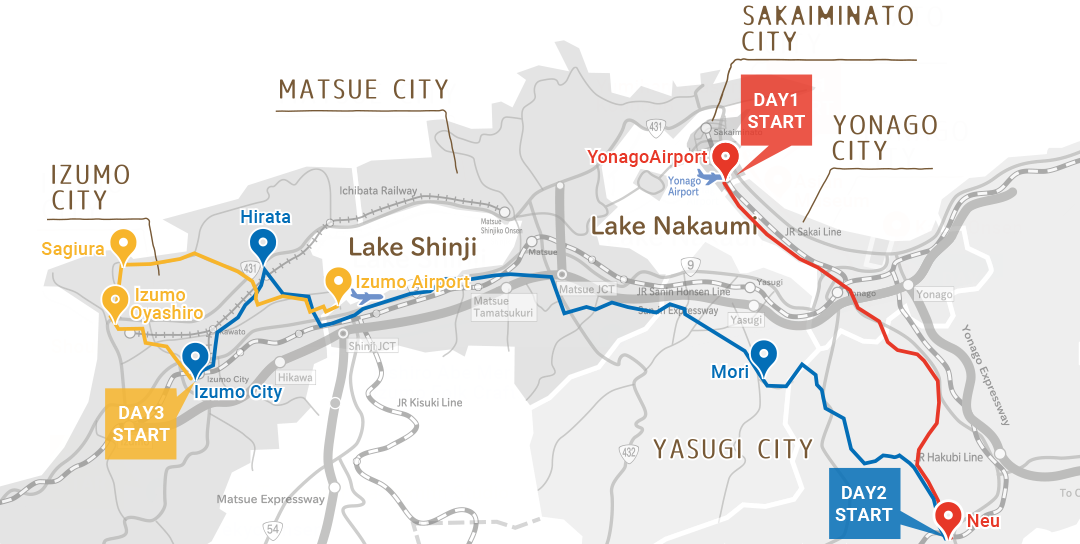Walk around old towns
The heart of the San’in region is known for its famous touristic places Matsue and Sakaiminato but it is also home to multiple quaint and historic towns.
Some of them, called Jokamachi, developed around castles, others around harbors and are called Minatomachi. Furthermore, there are Post towns with staging posts called Shukuba where travelers could stay or rest in the middle of the Kaido which were important transport routes of people and goods.
The first destination is Neu from Yonago Airport, one of the Shukuba along the Izumo Kaido which connects Himeji in Hyogo prefecture and Matsue in Shimane prefecture. The town flourished during the Edo period (1603 - 1868) and you can still see the signs in its townscape. One of them is the house of the Kondo clan who prospered from the steel industry. Another is the gate of Honjin, an inn for government officials and local lords, where the feudal lord of Matsue also stayed.
“Tataraya”, a soba-noodle restaurant, looks typical for the townscape with its lattice doors. Inside the restaurant, you will find a wooden plaque that was displayed at the entrance of the Honjin where the feudal lord of Matsue stayed. Their soba is made from buckwheat produced locally in the region of Hino Town. It is freshly ground, prepared and boiled, and has a delicate aroma with which you will have an appetite. The harvest season of buckwheat is in December, and that’s when their soba is the most delicious.
If traveling between November and March, you could make a side trip to the Hino River which runs near this Shukuba. At this time of the year colorful Mandarin ducks rest along the river. It is said that the number of these birds reaches a thousand between January and February. It is best to watch these vigilant birds at dawn and late afternoon from dedicated birding huts.
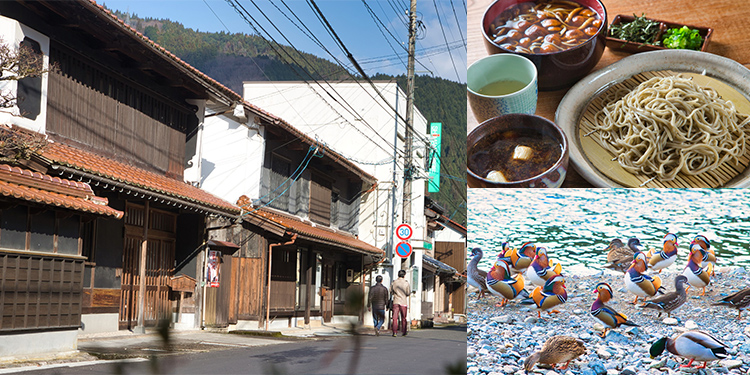
[On the upper right] Kamo seiro soba” with duck meat soup - 1050 yen (in the front) and a hot “Nameko soba” with lots of nameko mushrooms - 950 yen (in the back)
[On the lower right] Mandarin ducks: Males are colorful and a little bigger. Females are gray
You can enjoy staying at “Kominka Sasaki” which is a five-minute walk from the town center. Kominka are traditional Japanese folk houses. The house was built in 1829 and its main building, outbuilding and storehouse are registered as cultural properties. It is limited to one single group up to five people to stay. There is a kitchen to cook by yourself, but you can request a stay including two meals (13,000 yen) as well. Mr. Yoshio Sasaki, the owner of the place, organizes guided tours around the town and events in the kominka.
The dinner is an experience only a kominka can offer. It is a hot pot cooked over the glowing red charcoal of the traditional irori hearth. The hot pot comes with various ingredients including a lot of vegetables. The bath water is heated by firewood and it warms up your body.
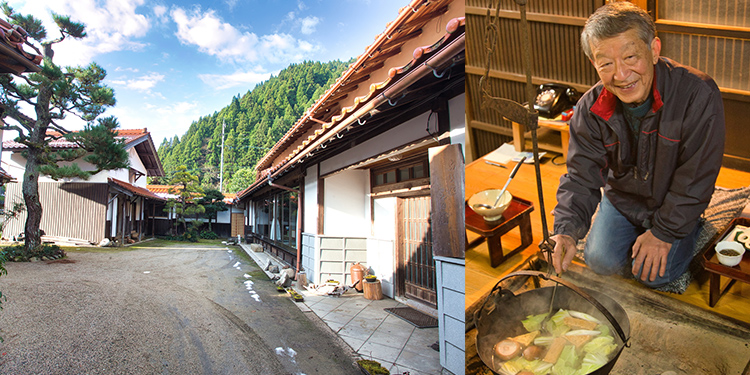
[On the right] Mr. Yoshio Sasaki preparing a hot pot on the irori hearth
Behind the pass to Shimane prefecture lies the destination of the following day; Mori, a small Jokamachi between the mountains. A subsidiary domain of Matsue ruled here, however no castle was built back then. Houses built a hundred years ago line the street, at the start of which lies a wooden yagura, which tells the time.
Walking down the street between a waterway and storehouses with white walls, you will find “Bettei Mori”, a restaurant in a renovated samurai residence. Its stately columns, ceiling and beams remain in the same condition as when it was built. Through the windows you can admire a traditional Japanese garden. There is a tea room next to the main building as well. The hosts accept guests to stay overnight, but it is limited to one group a day.
They serve a French course lunch combined with the Japanese-style cuisine (reservation required, 4800 yen). The course meal changes every month but the main ingredients are locally farmed, caught and cultivated free-range chicken, fish, and vegetables.
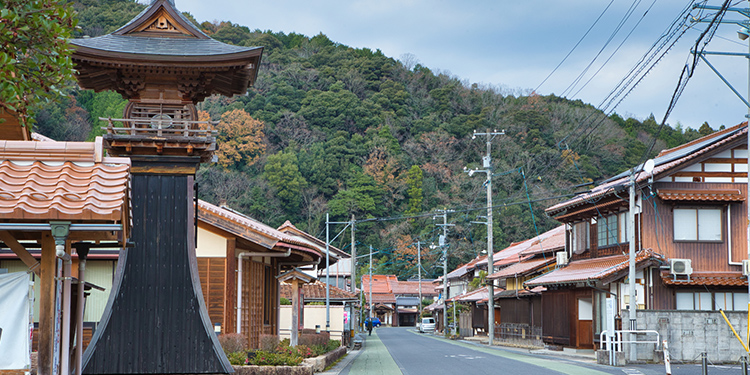
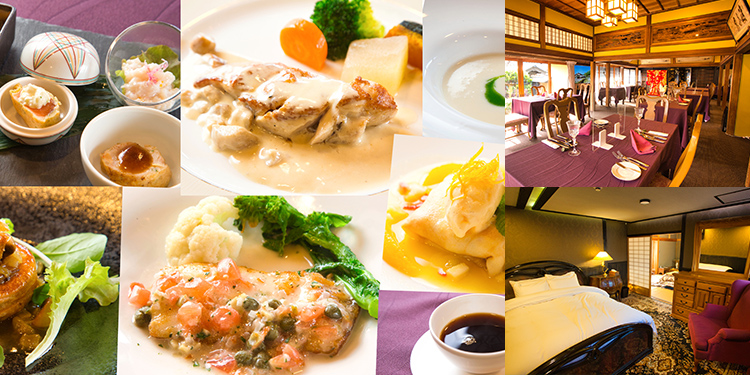
[On the upper right]A calligraphy (On the right) written by Tesshu Yamaoka who was a politician from the end of the Edo period to the Meiji era. He was also a master of sword and calligraphy.
[On the lower right]The accommodation has a Japanese-style room with tatami flooring and a bed room with a Western-style furniture. Its bathroom is spacious. (one accommodation for two people including two meals: from 45,100 yen)
Following the south bank of Shinji lake to the west, you will arrive at Hirata. The town used to be by the lake and thrived as a distribution and trading center of cotton during the Edo and Meiji era. Along the L-shaped street, you will see storehouses with white walls and narrow buildings which stretch out to the back. Many businesses are situated here such as breweries of soy sauce and sake, as well as eateries and hotels renovated from vacant houses.
Some of them offer experience tours. For example, there is a tour at “Kurumaya Shogato Honpo” to package the products, and another at “Oka Moichiro Shoten” to visit their soy sauce brewery.
“Kurumaya Shogato Honpo” was established in 1715 and produces confectioneries. Their product shogato is sugar candy made from Shussai ginger (shoga) harvested in the Shussai area, around Izumo city. It develops the sweetness of the sugar in your mouth and at the same time a spicy kick of ginger. On this experience tour, you will first need to break a plate of shogato into bite-sized pieces, wrap each piece with a small piece of paper, and package the pieces into a box in the end.
“Oka Moichiro Shoten” was established in 1897 and produces the double-fermented soy sauce. In the process the soy sauce is fermented twice in wooden barrels, each time for one and a half years. The double-fermented soy sauce contains high concentration of salt but it does not taste so salty thanks to a double umami that it has. On the tour, you can try four kinds of soy sauce and will be surprised by the differences. In addition, you will learn the characteristics of soy sauce made in different areas of Japan, and you will look inside the barrels where the soy sauce is fermenting.
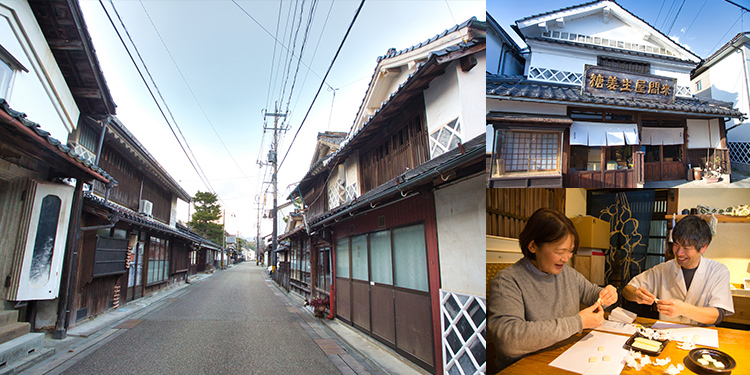
[On the upper right]Shop of “Kurumaya Shogato Honpo” with the signboard (that says “Kurumaya Shogato”)
[On the lower right]Mr. Hisashi Kuruma, the president, showing the process of packaging
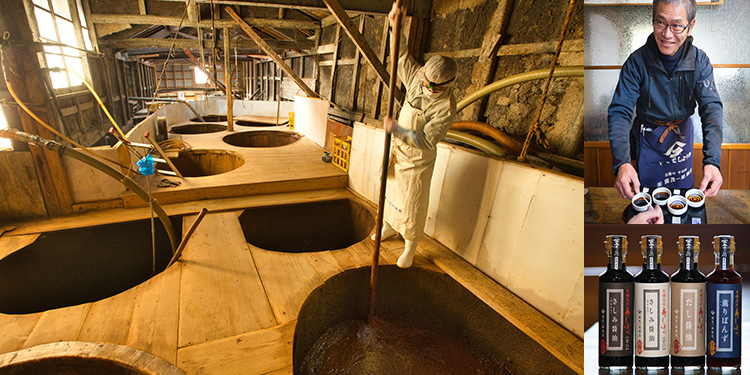
[On the upper right]Mr. Hideto Oka, the president, explaining the differences between the varieties of soy sauce
[On the lower right]Bottles of soy sauce on sale at “Oka Moichiro Shoten”
It is just a five-minute walk from Momen Kaido to “Izumo Enmusubi Onsen Yurari”, a hot spring spa. It is a perfect one-day trip to relax your body after traveling. There are open-air baths of 160 square meters with decorative rocks, indoor baths made of Japanese cypress, saunas and a restaurant. All hot-spring facilities and saunas are separated by gender.
The hot spring water has a slightly sulfurous smell. It is alkaline and helps smooth your skin. “Yurari” is one of the few places where you can enjoy natural hot spring water without additional water or a temperature control.
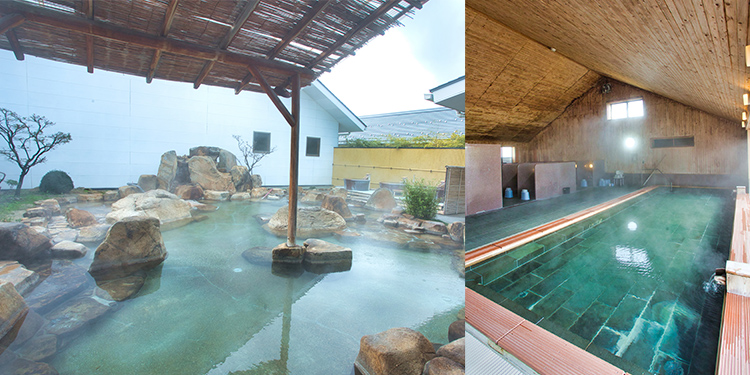
[On the right] Indoor bath: not only the bathtub but also the ceiling are made of Japanese cypress
On the next day, after staying in Izumo city, you can visit Izumo Oyashiro. There are gift shops and restaurants on both sides of the Shinmon street (Shinmondori) which runs straight to the torii, a gate of Shinto shrine.
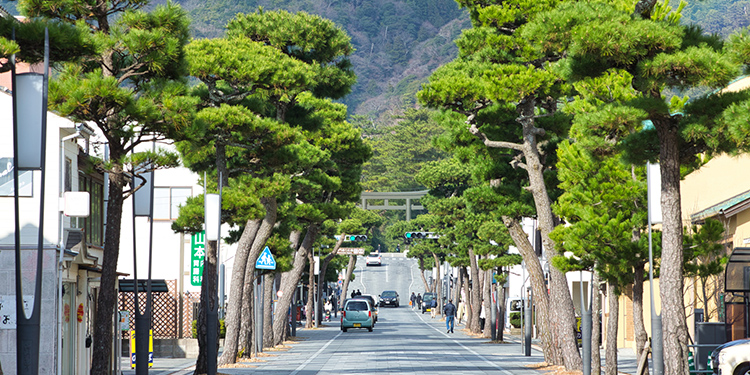
From Izumo Oyashiro following a narrow pass over the hills for four kilometers to the north, you reach the Minatomachi called Sagiura. Although the town is small nowadays with a population of only 180 inhabitants, it used to be a crowded town with a copper mine nearby and a port of call. Ships would stop in this port on their trip along the Kitamaebune, a trading route on the Sea of Japan. Along the harbor there are houses covered with the Sekishu gawara, red roof tiles.
Walking through the town, some elderly people pass by. There is only one grocery store in the town. It looks fallen out of the time but thanks to that, the town has a special charm and still maintains the old look from more than a hundred years ago.
Throughout the spring and fall when the weather is good, there are cruise tours in small boats around the harbor (from 3,000 yen). You can enjoy a magnificent view of shining clear water which is only available in a narrow sea cave which you go in by boat.
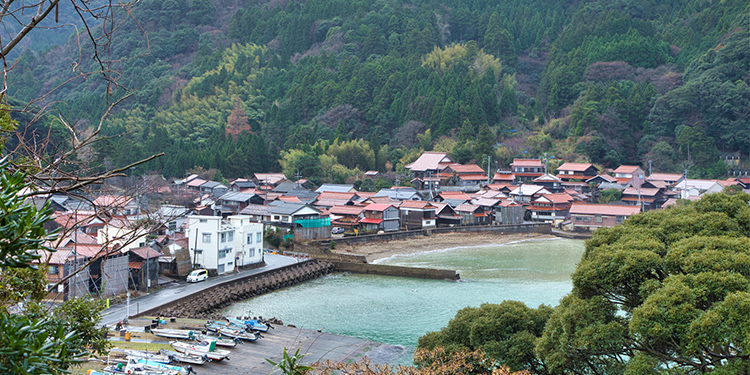
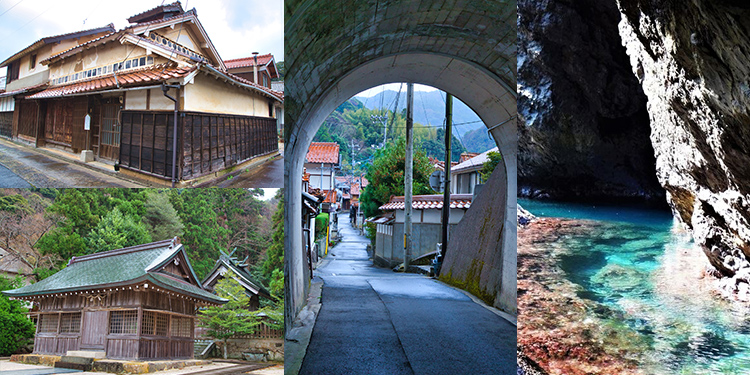
[On the lower left] Inasehagi jinja, an auxiliary shrine of Izumo Oyashiro
[In the middle] A tunnel built in 1933 by inhabitants
[On the right]Clear sea water in the cave also known as “Blue Grotto”


